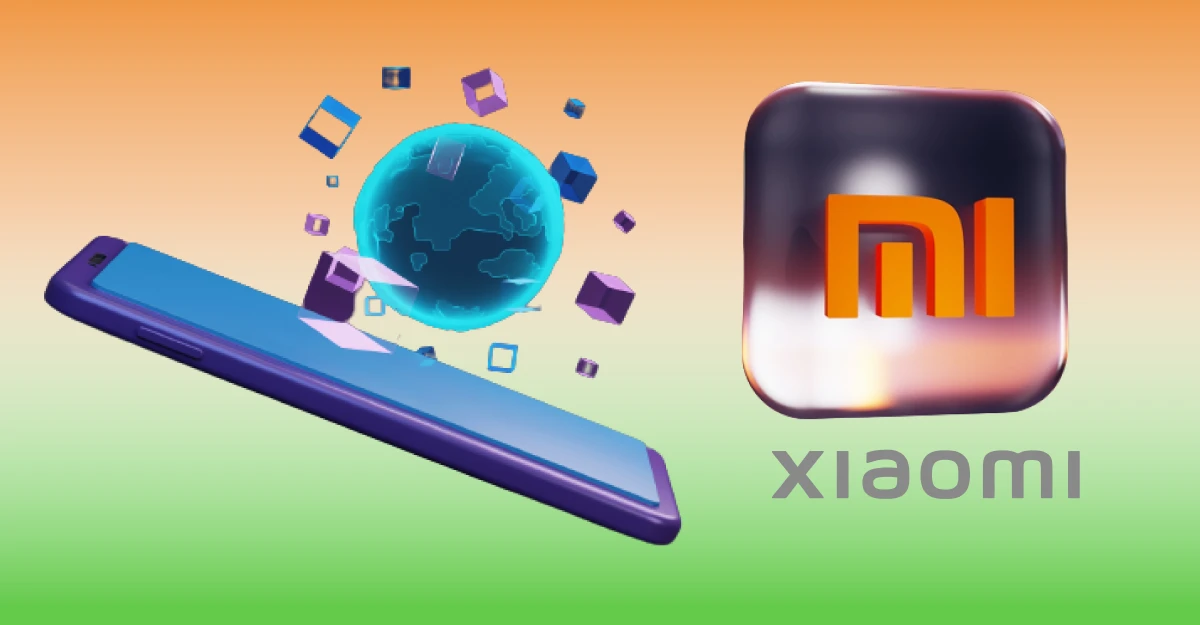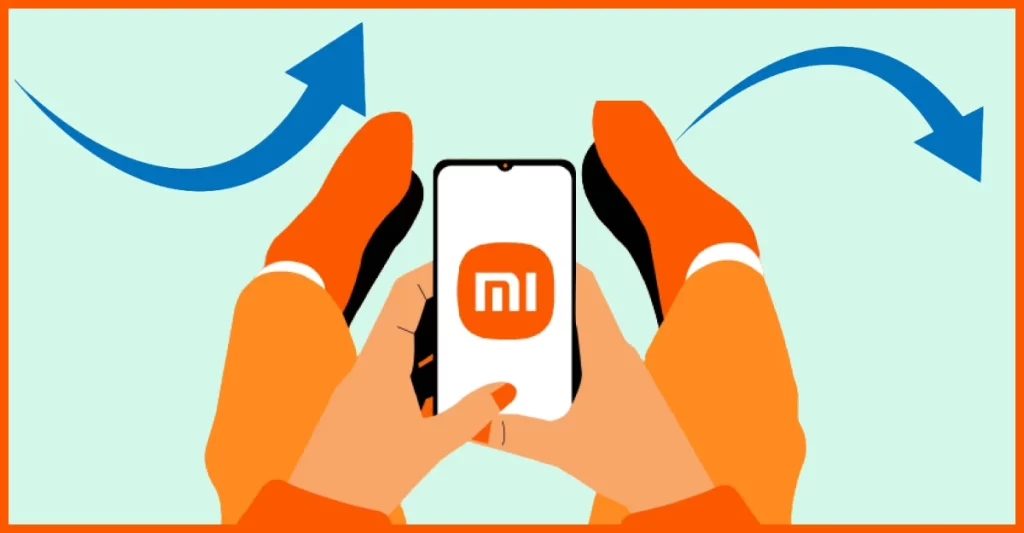The Xiaomi story is a testament to how a business can rise or fall based on changing customers’ preferences!
A decade ago, a Chinese tech giant stepped into India and achieved a grand success. I am sure you must have seen the smartphones- Redmi Note 4, Redmi Note 5 Pro, Redmi Note 7 Pro, Poco X2, etc around you.

But if you look around now, iPhones, OnePlus, and Samsung have grabbed those spots. Reason? The rise in disposable income and the craze of obtaining a luxurious status symbol has become an epidemic among Indians.
How did this scenario change? Why Xiaomi isn’t one of the most common smartphones in India anymore? You may ask.
Join us as we unravel the Xiaomi story in detail and analyze the factors that led to the rise and fall of Xiaomi in India.
(A) Synopsis of Xiaomi Story: How did Xiaomi enter India?
Let’s go through Xiaomi’s entry into the Indian market – an intriguing journey that started in 2013.
So, here the saga begins- Manu Kumar Jain, the brains behind Jabong (you know, the fashion e-commerce app later snagged by Flipkart), was scouting for his next venture. His eyes were set on the hardware space, and off he flew to China with hopes of securing investor backing.
Now, here’s where fate takes an interesting turn. Jain crosses paths with none other than Hugo Barra, Xiaomi’s then vice president, who had his sights firmly set on expanding into India. Rather than going down the founder route, Jain became Xiaomi’s inaugural executive in India, ready to disrupt the established order.

Jain’s mission was crystal clear – unseat the reigning champions of Indian smartphones: Micromax, Lava, and Karbonn. These companies had mastered the art of creating “value-for-money” phones, triggering an explosion in the Indian smartphone market with sales nearly tripling in 2013.
Enter Xiaomi, eager to claim its slice of the burgeoning market. But how did they navigate the challenge of an unfamiliar name in India? You know it is not that easy to pronounce Xiaomi for Indians. So what did they do? They simplified the term “Xiaomi” into “MI.”
To make a bold statement, they splurged a whopping $3.6 million in 2014 to secure the Mi.com domain – a landmark move and likely the most expensive domain purchase by a Chinese tech company at the time.
But the game-changer was their unconventional approach to marketing and sales. Xiaomi ditched traditional offline stores, opting to exclusively sell their phones online. In a strategic alliance with Flipkart, they introduced limited-period flash sales, unveiling their flagship phones – the cream of the crop.
The real jaw-dropper?
The price tag. Their first flagship offering hit the market at a mere ₹13,999, disrupting the industry with a perfect blend of quality and affordability. Quite an impactful entrance, wouldn’t you say?
(B) Rise to Dominance of the Xiaomi Story

Let’s rewind to 2014 when Xiaomi set foot in the Indian smartphone scene, challenging the status quo in the low-range category. Just picture this scenario- Micromax, Lava, and Karbonn reigning supreme. Xiaomi’s approach was a game-changer.
How did they do it?
Xiaomi’s foray into this market was a seismic shift. Their commitment to cutting-edge features like MIUI, extended battery life, and top-notch specifications under ₹15,000 struck a chord with the masses.
Operating exclusively online through a strategic partnership with Flipkart paved the way for competitive pricing, catapulting Xiaomi to swift success.
Guess what?
The results were staggering. In a mere three years, Xiaomi secured a commanding 24% market share in smartphones, surpassing the longstanding leader, Samsung.
At that high point, 1 in 2 smartphones sold online bore Xiaomi’s symbol! Remarkably, the top brass at Xiaomi considered India even more pivotal than its home turf, China. The ascent was nothing short of a massive success story.
(C) Peak Success of Xiaomi in India

It was the year 2017, also known as the golden period for Xiaomi! Why? You may ask. Well, because Xiaomi not only achieved greatness but also surpassed industry giants like Samsung and Apple, securing its throne as the leading smartphone brand in India.
The journey to this peak of success was marked by consistent product launches, the establishment of offline stores, and an impressive five-year reign at the summit, showcasing the brand’s initial triumph.
Now, here’s the fascinating backstory. Xiaomi’s initial surge to success was strategically directed at the sub-₹15,000 market segment. They didn’t stop there; the company extended its reach by introducing budget-friendly phones under the Redmi sub-brand, offering even more affordable options to the masses.
Astonishingly, a couple of years ago, in the pre-troubled times, Xiaomi boasted a lineup where 18 out of the 22 phone models listed on its website were Redmi phones. It was a testament to Xiaomi’s strategic dominance in catering to diverse market segments.
Note: We have described this part in “How Xiaomi penetrated Indian Market? Xiaomi’s India story.” Go through it for detailed information.
(D) Challenges in Shifting Market Dynamics: Maring the end of Xiaomi story’s purple patch
Let’s zoom into the aftermath scenario – Xiaomi’s journey that once sparkled with success began encountering a tough challenge.
How?
As the Indian consumer market leaned towards more premium options, Xiaomi faced a hurdle in transforming itself into an aspirational brand, struggling to align with evolving preferences away from budget phones.
This was the point where the craze of iPhone and premium Samsung phones started booming in India. We will discuss this part in the upcoming sections.
So what was the consequence of the change in Indian consumers’ behavior?
Xiaomi slipped from its once-held throne to now sit in the fourth position in the smartphone charts. In response, Xiaomi decided to pivot – cutting down on the total number of phone launches, adopting a leaner approach, and refocusing on the 5G landscape in hopes of regaining lost ground.
Now, the crucial question arises: What went wrong for Xiaomi? Where was the misstep? It’s time to unravel the reasons that led Xiaomi from the pinnacle of success to its current position and understand the pivotal mistake that altered its trajectory.
(E) Geopolitical Challenges & Government Intervention

In this section, you will get to know the root cause of Xiaomi’s fall in India.
So, let’s dive into the twists and turns of 2020 – a year that threw Xiaomi a curveball with geopolitical challenges and government interventions.
The Galwan Valley battle! I’m sure you are well aware of that… How can we forget the sacrifices of Indian soldiers on that day…
Guess what? This factor drove a massive anti-China sentiment in India. Boycott China and Chinese products became the slogan in India.
Geopolitical tensions continued to rise. Eventually, it led the Indian government to swing the ban hammer on over 300 Chinese apps, sending ripples through Xiaomi’s software business. Anti-Chinese sentiments took root, sparking boycotts of Chinese smartphones.
But wait, there’s more to this saga. The Indian tax authorities jumped into action, firing off income tax notices and alleging foreign exchange violations. The Enforcement Directorate dropped a bombshell, claiming Xiaomi was disguising payments to foreign entities as royalty fees. This led to the freezing of Xiaomi India’s assets, a whopping $1 billion locked away.
Fast forward to February 2022, the Indian tax authorities went full throttle, raiding Xiaomi’s offices and dropping the bomb of illegal remittances. Assets worth ₹5,551.27 crore were frozen, adding another layer to Xiaomi’s growing list of challenges. Internal turmoil brewed, and key executives, including India business head Raghu Reddy, bid farewell amidst the chaos.
Hold onto your hat – more shockwaves followed.
Star executive Manu Kumar Jain slipped away quietly, taking up a role in Dubai, and eventually exiting the company in January 2023. Other top executives followed suit, handing in their resignation papers. The exodus of the team that built Xiaomi India hinted at a significant shake-up in the overall strategy.
Sure, Xiaomi took a hit, but they didn’t stay down for long. They roared back into the scene, proudly displaying a “Made in India” page on their website. Not stopping there, they highlighted their philanthropic efforts, showcasing donations to families of Indian soldiers who made the ultimate sacrifice. The resilience displayed after these setbacks was nothing short of a triumphant comeback for Xiaomi.
(F) Opportunity Seized by Competitors
Do you know what’s the core nature of competitors? They always wait for your downfall and They have a strong desire to replace you in your respective field! And that too strategically…
When Xiaomi hit a rough patch, competitors like Samsung, Vivo, and Oppo swooped in, seizing the chance to shine. Oppo, in particular, stole the spotlight by nailing product differentiation. They played it smart with their sub-brand Realme, strategically conquering the online market.
Oppo’s victory dance was all about standing out, while Xiaomi’s strategy seemed to have stirred up a bit of a whirlwind. This faceoff in marketing tactics became a game-changer in the smartphone showdown.
Let’s see the market share of Xiaomi in India in the last four years-
| Particulars | 2020 | 2021 | 2022 | 2023 |
| Xiaomi | 28% | 25% | 20% | 16% |
| Samsung | 20% | 19% | 19% | 21% |
| Vivo | 19% | 14% | 17% | 18% |
| Realme | 13% | 15% | 14% | 9% |
| Oppo | 13% | 13% | 15% | 18% |
| Others | 7% | 13% | 16% | 18% |
You must note the fact that here Xiaomi includes Mi, Redmi, and Poco. All three of them belong to Xiaomi! Reason? Go through the next section and you will find out!
(G) Strategic Revamp & Resurgence: The Ongoing Xiaomi Story
Now, let’s talk about Xiaomi’s game plan. They went for an umbrella marketing approach, rolling out Mi, Poco, and Redmi online, all under the Xiaomi banner. But here’s where it gets a bit tangled – this left consumers scratching their heads in confusion.
Also, Xiaomi decided to cut down on the frequency of their phone launches. Instead, they shifted gears and introduced a lineup of affordable 5G phones, making waves in the market.
Fast forward, and Xiaomi isn’t just back in the game; they’ve secured the second position in the market, marking a commendable resurgence.
This isn’t just a narrative of bouncing back; it’s a masterclass in understanding and adapting to the ever-shifting landscape of consumer preferences, especially in the dynamic economies of countries like India.
(H) Takeaway: What can we learn from the Xiaomi story?
Let’s discuss the key takeaways from the Xiaomy story-
| Takeaways from Xiaomi Story | Description |
| Adaptability is Key | Xiaomi’s success stemmed from its ability to adapt to the ever-changing consumer landscape. The brand shifted strategies, entered new market segments, and embraced emerging technologies like 5G. |
| Market Sensitivity | Xiaomi’s initial success in the budget-friendly segment aligned with Indian consumer preferences. However, challenges arose when the market shifted towards premium segments, emphasizing the importance of staying attuned to evolving market dynamics. |
| Strategic Diversification | Xiaomi’s introduction of sub-brands like Redmi showcased the importance of diversifying product offerings to cater to different consumer segments and preferences. |
| Online Presence Matters | Xiaomi’s online-only approach through partnerships with platforms like Flipkart played a pivotal role in its initial success. This highlights the significance of effective online strategies in reaching a broad audience. |
| Geopolitical Considerations | Geopolitical challenges, including app bans and allegations, affected Xiaomi. This underscores the importance of navigating geopolitical landscapes and having contingency plans for such situations. |
| Competitor Awareness | Rivals like Samsung, Vivo, and Oppo capitalized on Xiaomi’s setbacks. The importance of being aware of competitors and differentiating products in a crowded market is evident. |
| Internal Resilience | Internal challenges, including key executive departures, highlight the importance of fostering resilience within the organization to weather storms and maintain strategic focus. |
| Philanthropy & Brand Image | Xiaomi’s efforts in philanthropy, such as donations to families of Indian soldiers, showcase the impact of positive social initiatives on brand perception and resilience during challenges. |
You can apply these lessons in navigating dynamic business environments.
(I) Summing Up the Xiaomi Story
Let’s summarize the Xiaomy story in short-
| Key Event of Xiaomy Story | Details |
| Strategic Entry | Entered the Indian market in 2014 with an online-only model in collaboration with Flipkart. |
| Budget-Friendly Focus | Initially focused on the below ₹15,000 market, offering superior features and competitive pricing. |
| Market Domination | Achieved remarkable success by becoming the leading smartphone brand, surpassing Samsung and Apple in 2017. |
| Product Diversification | Launched an array of phones, including the budget-friendly Redmi sub-brand, catering to diverse consumer segments. |
| Premium Market Challenge | Faced challenges repositioning as an aspirational brand as the Indian market shifted towards premium segments. |
| Geopolitical Setbacks | Battled geopolitical tensions, app bans, and allegations of foreign exchange violations, impacting business operations. |
| Competitor Capitalization | Competitors like Samsung, Vivo, and Oppo seized the opportunity during Xiaomi’s setbacks, emphasizing product differentiation. |
| Internal Turmoil | Experienced internal challenges, including key executives leaving amid crises, reflecting potential organizational disruptions. |
| Strategic Revamp | Responded to challenges with a strategic revamp, focusing on limited phone launches and introducing affordable 5G models to reclaim market share. |
| Market Resurgence | Successfully staged a comeback, reclaiming the second rank in the market, and showcasing adaptability to evolving consumer preferences. |
Thus, the Xiaomi story is a lesson in adapting to the ever-changing demand of consumers, especially in the vibrant economies of countries like India. Xiaomi didn’t just bounce back; it showcased the importance of staying ahead of the curve and meeting the evolving preferences of the tech-savvy masses. So, grab your popcorn because the smartphone saga is far from over!
Thanks for giving your precious time to read this whole write-up. Please, don’t forget to share your thoughts in the comments section!

